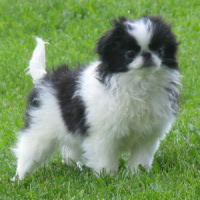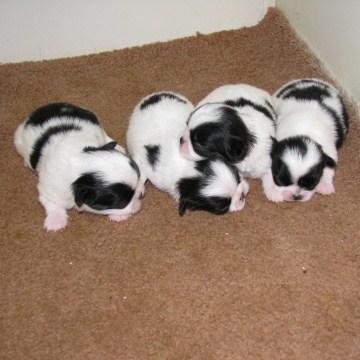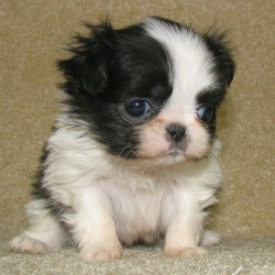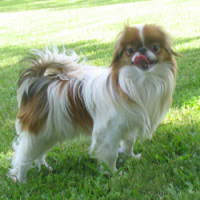Japanese chins do not need to be bathed as often as they are groomed, they do however, need to be bathed once month. Bathing your dog does not always have to be a full blown spa affair, your main concern should be just getting it done. By bathing your pet regularly you will also make future grooming easier.

The Tools
Before giving your Japanese chin a bath, you need to give him a good grooming. That means brushed, combed and no tangles. Before starting the bath, get everything you're going to use together and put it close the the tub or sink you're using. If not, you're going to go looking for your brush with a wet puppy bouncing around the house.
What you'll need for the bath is shampoo and conditioner, sponge, scrub brush, bath mat, heavy towel, hair dryer, and a cup or spray bottle for rinsing. With a Japanese chin you need to be very careful with the head and make sure that water does not get into the eyes and nose. You also need to be very careful to thoroughly rinse out the hair so no shampoo remains.
Your choice of shampoo should be based on what type of hair your dog has and any skin problems they have. There are whiteners available that work very well to whiten the white hair. Most of these shampoos do not affect the black or red part of the hair. Only use shampoos that are white, blue or clear, other colored shampoos may tint your Japanese chin's coat. After a few months you will be able to tell which shampoo is best for your dog.
During flea season you may want to use a shampoo that has anti-flea ingredients in them.
Whether or not you use conditioner is really up to your preference. The hair will be softer and easier to comb out if you do use it.
 Monday, July 19, 2010 at 07:44PM
Monday, July 19, 2010 at 07:44PM  We had a litter of 3 girls and 1 boy born on 7/9/2010. These Japanese Chin Puppies are 10 days old today.This is a litter of very nicely marked and healthy puppies. Three of these puppies will be available to new homes after they are 10 weeks old.
We had a litter of 3 girls and 1 boy born on 7/9/2010. These Japanese Chin Puppies are 10 days old today.This is a litter of very nicely marked and healthy puppies. Three of these puppies will be available to new homes after they are 10 weeks old. Ultimate Chin Puppies | Comments Off |
Ultimate Chin Puppies | Comments Off | 

